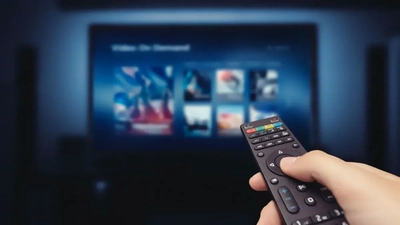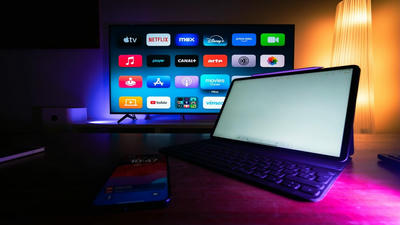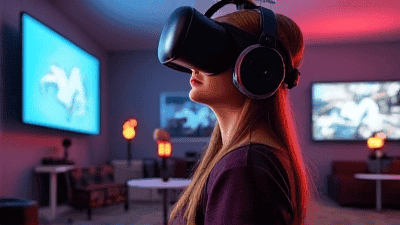
From Broadcast Waves to Global Streams: Decoding Television's Transformative Journey and Future Horizons
Television, once a simple communal experience centered around a fixed schedule and a handful of channels, has evolved into a sprawling, hyper-personalized ecosystem. What began as an extension of radio, delivering news and entertainment directly into homes, has become a complex tapestry of on-demand content, interactive platforms, and global distribution networks. This profound shift challenges our very definition of "television" and reshapes how we consume media daily.
The evolution of television stands as a pivotal narrative in modern media history, reflecting technological innovation, cultural shifts, and changing audience demands. Its journey from linear broadcast to fragmented streaming services carries immense importance for media scholars, content creators, advertisers, and consumers alike. Current debates around "cord-cutting," the "streaming wars," and content ownership underscore how fundamental this evolution is. Understanding how television adapted to the internet era, embraced digital distribution, and fostered personalized viewing experiences is key to navigating the future of entertainment and communication. What impact would it have on our understanding or practice of media and culture if we failed to fully comprehend this rapid and continuous transformation?
The Rise of Network Giants

The Golden Age of Broadcast and the Cable Revolution
The mid-20th century marked the dawn of television’s "Golden Age," characterized by the dominance of a few major networks: NBC, CBS, and ABC. These networks operated on a linear broadcast model, transmitting signals over airwaves to antennae-equipped homes. Programming was scheduled rigidly, fostering a shared national viewing experience. Sitcoms, a cornerstone of this era, like "I Love Lucy" or "The Dick Van Dyke Show," exemplified mass appeal through relatable characters and family-friendly humor, often filmed with a live studio audience (multi-camera setup, standardizing production). Their success lay in their ability to capture collective attention, creating cultural touchstones that transcended demographics. The advent of cable television in the 1970s and 80s, initially to improve reception in rural areas, fundamentally disrupted this oligopoly. Cable introduced a vast proliferation of specialized channels, moving beyond general entertainment to niche interests such as news (CNN), sports (ESPN), and specific genres, transforming television from a scarce resource into an abundant one. This "cable revolution" offered viewers unprecedented choice, beginning the fragmentation of the mass audience that defines today's media landscape.
The Digital Disruption
Streaming's Ascent: Personalization and On-Demand Entertainment
The late 20th and early 21st centuries ushered in the digital age, irrevocably transforming television consumption. Technologies like Digital Video Recorders (DVRs), pioneered by TiVo, empowered viewers to pause, rewind, and record live television, liberating them from rigid broadcast schedules. This paved the way for Video On Demand (VOD) services, which offered selected content for rent or purchase. However, the true game-changer was the widespread adoption of streaming, spearheaded by companies like Netflix. Initially a DVD-by-mail service, Netflix pivoted to Subscription Video On Demand (SVOD) in 2007, offering an ever-growing library of content accessible over the internet, anytime, anywhere. This model fundamentally shifted consumer expectations from linear programming to on-demand access.
Streaming platforms leverage sophisticated algorithms to analyze viewer data – watch history, pause points, search queries – creating highly personalized recommendations. This "content personalization" tailors the viewing experience to individual tastes, fostering deeper engagement but also raising questions about "filter bubbles." The sheer volume of content, coupled with these predictive analytics, creates a unique entertainment landscape. The financial commitment to content creation by these platforms highlights their aggressive market strategies, as detailed below.
| Platform | 2023 Content Spend (Est. Billion USD) | Original Series Library (Approx.) | Global Subscribers (Millions) |
|---|---|---|---|
| Netflix | 17.0 | 2,200 | 269 |
| Disney+ | 14.5 | 600 | 154 |
| Amazon Prime Video | 7.0 | 750 | 200 |
As this table illustrates, major streaming services are investing billions in content, particularly original productions, to attract and retain subscribers. This intense competition, often termed the "streaming wars," underscores the value placed on exclusive, high-quality content in a saturated market, further solidifying the shift towards a personalized, on-demand entertainment paradigm.
Beyond Broadcast

Interactive Futures and Niche Ecosystems
The future of television promises even more profound shifts, driven by emerging technologies and evolving viewer expectations. Artificial Intelligence (AI) is set to revolutionize content creation, from script generation to hyper-realistic visual effects, and further refine recommendation algorithms, potentially leading to truly individualized storytelling experiences. Imagine AI-driven narratives that adapt based on your real-time emotional responses or historical viewing patterns. Interactive television, currently in its nascent stages with examples like Netflix’s "Bandersnatch," is poised for broader adoption, allowing viewers to make choices that influence plotlines, essentially turning passive consumption into active participation.
Moreover, the rise of niche streaming platforms caters to increasingly specific tastes, moving beyond broad genre categories to hyper-focused content communities. This fragmentation, while challenging traditional advertising models, offers unparalleled choice. The metaverse, an immersive digital environment, presents a novel frontier for shared viewing experiences, enabling virtual watch parties or interactive experiences within digital worlds. Advertising itself is transforming, moving from broad commercial breaks to personalized, dynamically inserted ads (Dynamic Ad Insertion - DAI) based on individual viewer profiles. This evolution ensures that television, in its myriad forms, remains a dynamic and endlessly adapting medium.
Conclusion
The journey of television, from the communal hearth of linear broadcast to the intimate, personalized screen of streaming, reflects a monumental technological and cultural metamorphosis. We have witnessed the transformation from a scarcity of channels dictating a universal viewing schedule to an abundance of content shaped by individual algorithms and preferences. The dominance of a few network giants gave way to a fragmented landscape of cable offerings, which in turn yielded to the ubiquitous on-demand model of streaming services. This evolution underscores television's enduring power as both a mirror of society and a primary source of entertainment and information, continually adapting to new technologies and shifting audience desires.
Looking ahead, the television landscape will continue its rapid evolution, driven by artificial intelligence, immersive technologies, and an ever-deepening personalization of content. Future trends point towards hyper-interactive narratives, the integration of augmented and virtual reality into viewing experiences, and the proliferation of niche platforms catering to micro-audiences. Challenges remain, including concerns over data privacy, the sustainability of current content spending, and the potential for increased digital divides. However, the relentless pace of innovation, coupled with the increasing integration of interdisciplinary technologies like AI and blockchain for content ownership, ensures that television will remain at the forefront of media discourse. Continuous research and adaptability will be paramount for content creators, distributors, and consumers to navigate this exciting and complex future.
Frequently Asked Questions (FAQ)

Q: What is the fundamental difference between traditional broadcast television and modern streaming services? A: The core distinction between traditional broadcast television and modern streaming services lies in their delivery mechanisms, content models, and user experience. Traditional broadcast television, often referred to as linear TV, transmits its signal over the airwaves (terrestrial), via satellite, or through coaxial cables directly into homes. Viewers access content at specific, pre-determined times according to a fixed schedule across a limited number of channels. The revenue model primarily relies on advertising during commercial breaks, supplemented by subscription fees for cable or satellite packages. Content discovery is largely passive, relying on channel surfing or program guides. In contrast, streaming services deliver content over the internet using protocols like HTTP Live Streaming (HLS) or Dynamic Adaptive Streaming over HTTP (DASH). This enables on-demand access, allowing viewers to choose what they want to watch, when, and on virtually any internet-connected device. Streaming platforms typically operate on a subscription (SVOD), advertising (AVOD), or transactional (TVOD) model. Their vast libraries of content are often personalized through algorithms, facilitating active content discovery tailored to individual viewing habits. The shift represents a move from scheduled, passive consumption to flexible, active, and personalized engagement.
Q: How do streaming platforms personalize content recommendations, and what are the implications for viewers? A: Streaming platforms utilize sophisticated machine learning algorithms to personalize content recommendations, creating a unique viewing experience for each user. These algorithms collect vast amounts of data, including watch history (what you've watched, how long, when), search queries, ratings, genre preferences, interactions (pausing, rewinding), and even data from similar users. By analyzing these patterns, the system predicts what other content you might enjoy. For instance, if you binge-watch sci-fi thrillers, the algorithm will suggest more titles within that genre or related sub-genres, even considering the specific actors or directors you favor. The implication for viewers is a highly curated content feed that makes discovery easier and often more satisfying, reducing decision fatigue. However, this personalization also carries potential drawbacks, often described as "filter bubbles" or "echo chambers." By constantly showing you content similar to what you already like, these algorithms can inadvertently limit exposure to diverse viewpoints, new genres, or challenging perspectives. This could lead to a narrowed cultural diet, making it harder for viewers to stumble upon content outside their established preferences, thereby potentially reinforcing existing biases or tastes rather than broadening them.








